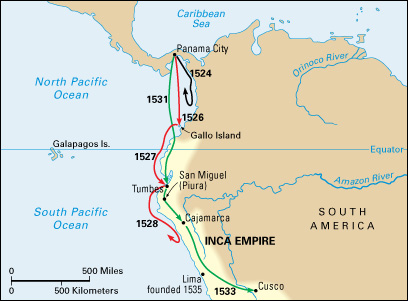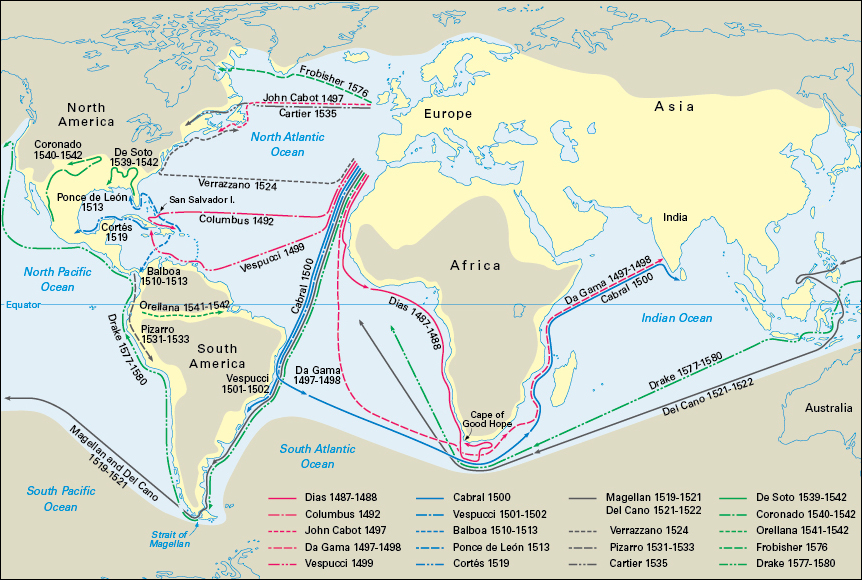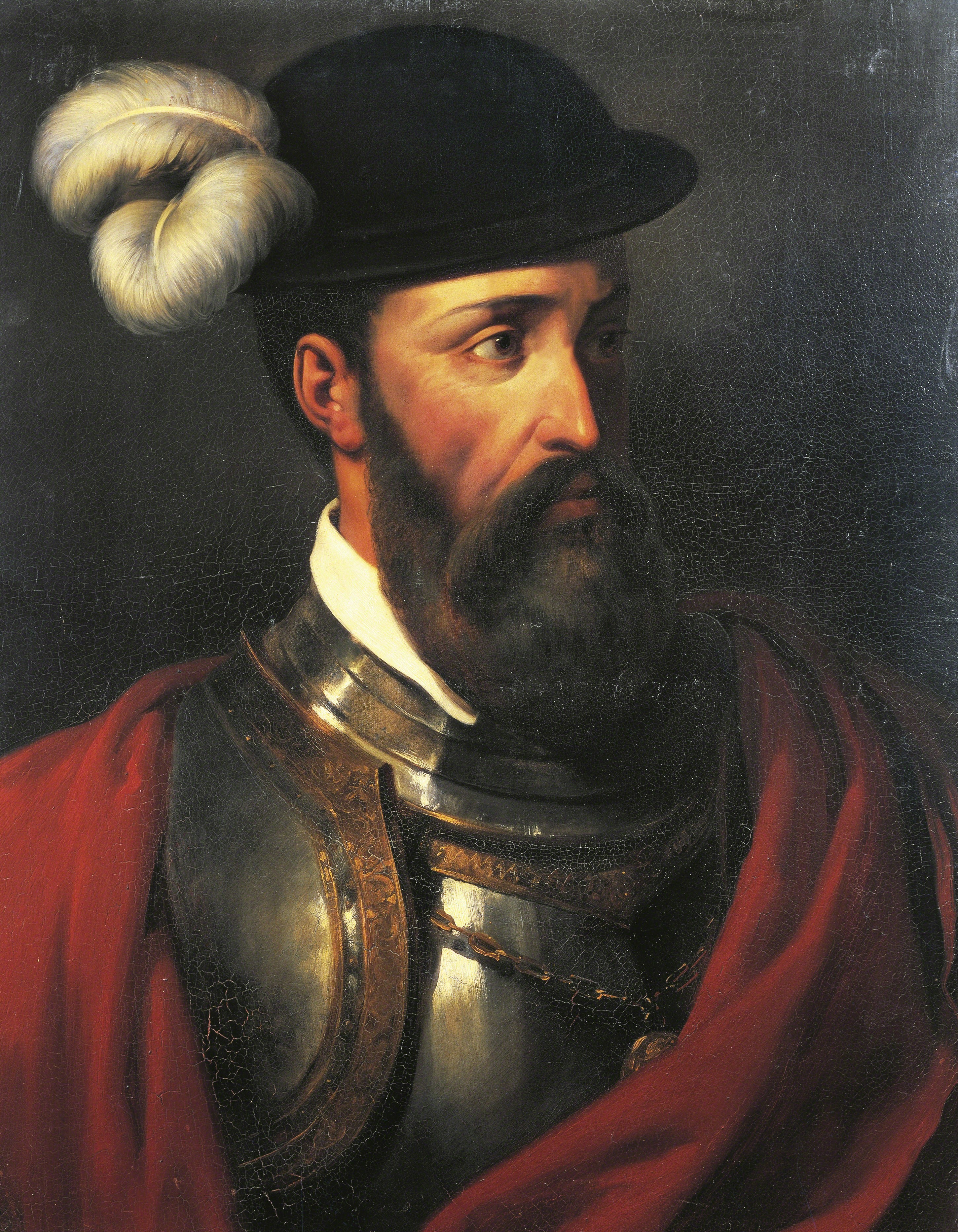Pizarro, Francisco << pee THAHR roh or pih ZAHR oh, frahn THEES koh or frahn SIHS koh >> (1478?-1541) was a Spanish conqueror. His conquest of the Inca empire in Peru opened the way for Spain’s colonization of most of South America.
Early life.
Pizarro was born in Trujillo, Spain. His father was a royal captain of infantry. Francisco’s parents never married each other. Poor relatives of his mother raised the boy, who never learned to read. In 1502, Pizarro left for the Caribbean region. He lived for a while in Hispaniola, the main Spanish base in the New World. He may have been aided by a brother of his father’s who was already in the Caribbean.
First expeditions.
In 1509, Pizarro left Hispaniola to take part in exploration of the Caribbean coast of northern South America and southern Central America. He served as Vasco Núñez de Balboa’s chief lieutenant when Balboa marched across the Isthmus of Panama to the Pacific Ocean in 1513 (see Balboa, Vasco Núñez de). Six years later, the Spaniards founded Panama City on the Pacific coast. Pizarro was one of its wealthiest and most powerful citizens.
The Spaniards in Panama City became interested in reports of a rich Indian empire somewhere to the south. In 1524, Pizarro began the first of several expeditions to search for this empire. He was helped by another Spaniard, Diego de Almagro, who served chiefly as business manager of the expeditions. Pizarro led the explorations down the Pacific coast. At first, bad weather and Indian attacks prevented the voyagers from finding the empire, which was centered in what is now Peru. Pizarro finally reached his goal in late 1527 or early 1528.

Conquest of Peru.
Pizarro saw much evidence of gold and other riches in Peru. He soon returned to Spain, and King Charles I appointed him governor of Peru. In 1531, Pizarro sailed from Panama City with about 180 men. They landed in what is now Ecuador. In 1532, they founded San Miguel (now Piura) in northern Peru.

Pizarro next advanced to Cajamarca, where the Inca ruler Atahualpa had gathered his forces. In a surprise attack with swords, horses, and guns, Pizarro’s men captured Atahualpa and killed thousands of Inca. The Spaniards promised to spare Atahualpa’s life in return for vast riches. The Inca were able to agree to the ransom because Peru had more silver and gold than any other part of the Americas. But in 1533, after receiving a large treasure, the Spaniards executed Atahualpa. Pizarro then advanced southward to Cusco, the Inca mountain capital. The conquerors took control of the city later in 1533.
Later life.
In 1535, Pizarro founded the city of Lima and made it Peru’s capital. While he was governor of Peru, many Spaniards settled there. The settlers started mining great amounts of silver and gold and began to build many cities. Using Peru as its base, Spain conquered most of the rest of the Andes Mountains region.

In the late 1530’s, a dispute between Pizarro and Almagro over who was to rule the area around Cusco led to war. Pizarro’s forces won the conflict in 1538 and executed Almagro. On June 26, 1541, followers of Almagro’s son killed Pizarro.
